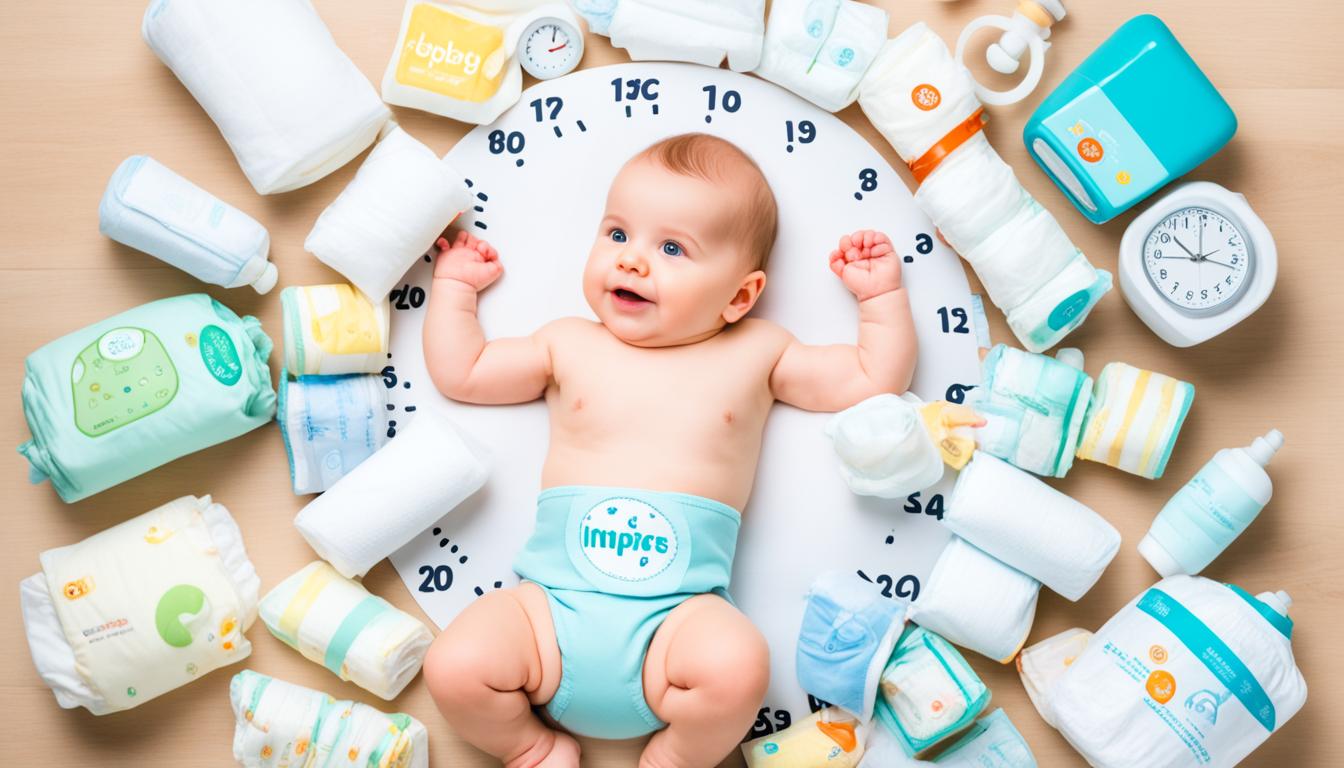Can You Donate Plasma While Breastfeeding?
Donating plasma is a deeply meaningful experience that resonates with many, as it represents a selfless act of charity with the potential to save lives. Having personally engaged in plasma donation, I can attest to the profound joy and fulfillment it brings, knowing that your contribution directly impacts those in need of this life-saving resource.
In recent years, plasma donation has gained momentum as more people recognize the chance to play a vital role in supporting their communities. What makes this act even more appealing is its inclusivity, welcoming virtually any healthy individual to join in and make a positive difference.
However, it’s crucial to acknowledge that not everyone is encouraged to participate in plasma donation initiatives. Pregnant and breastfeeding mothers, for instance, are advised to refrain from this noble endeavor.
But why do healthcare experts caution against plasma donation for these mothers? The answer lies in the rigorous nature of the plasma donation process, as it can potentially pose risks to women in these specific life circumstances. Delving deeper into the complexities of plasma donation allows us to appreciate the underlying reasons for these precautionary measures.
Skip To The Following Sections
- A Short Summary of Plasma Donation
- Can I Donate Plasma While Pregnant?
- Can You Donate Plasma While Breastfeeding?
- How To Prepare for A Plasma Donation
- Why Can’t I Donate Plasma After Having a Baby?
- Can I Donate Plasma After an Abortion?
- Difference Between Whole Blood and Plasma Donations
- Medical Conditions That Could Prevent Breastfeeding Mothers From Being Eligible Donors
- FAQ:
- Will donating plasma affect breastfeeding?
- Can I donate plasma 2 months postpartum?
- How long after I stop breastfeeding can I donate plasma?
- How Often Can You Donate Plasma?
- How Much Do You Get for Donating Plasma?
- How Long Does It Take to Donate Plasma?
- Plasma Donation Requirements
- How Old Do You Have to Be to Donate Plasma?
- Where Can I Donate Plasma?
- How Do You Donate Plasma?
- Who Can Donate Plasma?
- What to Eat Before Donating Plasma?
- Are There Side Effects of Donating Plasma?
- Is It Safe to Donate Plasma?
- Conclusion
A Short Summary of Plasma Donation
Here is a brief overview of what plasma is, why people donate it, and why it is so important.
Plasma comprises 55% of the composition of blood and is the reason why blood is a liquid. Plasma is the fluid that carries the red blood cells, white blood cells, and platelets.
Plasma is given to a wide range of patients. Serious trauma, liver disease, and immune deficiency disorders are reasons why plasma is necessary. Plasma therapy has the ability to save people with rare and chronic illnesses.
People who can donate plasma must be over 18 years old and weigh at least 110 pounds/50 kilos. They must also be healthy and free from any illnesses. People undergo medical exams and screenings before they can donate plasma.
Plasma donation is a generally safe procedure. However, it can come with a few side effects.
Donators can experience some negative side effects. These include dehydration, fatigue, lightheadedness, and bruising. There is also a rare chance of having an infection, citrate reaction, or an arterial puncture.
But these side effects are easily avoidable. Being prepared and donating to a reputable source will ensure a successful procedure.
Can I Donate Plasma While Pregnant?
Pregnant mothers are advised not to undergo donation because it is taxing on their bodies and babies. Stress is placed on the body when donating plasma.
Mothers are already exerting energy while carrying a life. A baby demands a lot of nutrients from its mother, including blood. Making a mother give up more blood can not only be stressful, but it can also be dangerous.
Denying mothers to donate does not only protect her. It also protects the child she is carrying inside her. But if a mother cannot donate while pregnant, can she donate once she has given birth?
Giving birth is a difficult procedure. Blood loss, among different things, can happen. That’s why mothers are discouraged from donating until they have recovered.
The best time for mothers to donate again is after 6 months of delivery. During this time, mothers have recovered from the stress of giving birth.
But what about breastfeeding? Will plasma donation affect the mother’s ability to produce breast milk?
Can You Donate Plasma While Breastfeeding?
Yes, you can donate plasma while you are nursing a baby. However, there are some things that you need to watch out for before you head to the clinic.
Learn these simple methods to increase your own breastmilk supply
Mothers who are nursing their babies need to be in good health and free from any illness. They are advised to first visit their physician before they can continue donating.
Can I Take Emergen C While Breastfeeding
Nursing mothers who have a problem producing milk are not advised to donate until their baby has been weaned. Donating plasma can cause a dip in the production of breast milk.
If a mother is in good shape, disease-free, and can produce enough milk, they can donate plasma.
But the most important thing to consider is whether a mother is willing or not. Donation is a voluntary choice a mother can make. If she does not feel comfortable donating plasma, she can choose not to.
How To Prepare for A Plasma Donation
Mothers can do some things to make the procedure go smoothly. These steps are important to follow if any mom wants to donate plasma.
- Drink plenty of water 48 hours before the procedure. Plasma can remove a lot of water from a person’s body. For mothers, breast milk needs that water to be produced. Staying hydrated will help avoid any negative side effects and keep the breast milk supply from falling.
- Eat a healthy meal before donating plasma. Mothers will need all the energy they can get because the procedure can take some nutrients away. Eating a good meal after is also a must.
- Eat iron-rich food. Plasma donation can cause a dip in the body’s iron level. This can cause anemia, dizziness, and sickness for some women.
- Avoid tobacco, alcohol, or caffeine before plasma donation. Not only are these things harmful to a mother’s body and baby, but they can also make a woman weaker during plasma donation.
- Avoid fatty and high-cholesterol food before donating. Fatty food can affect blood tests and make you ineligible to donate.
- And finally, get a good night’s rest. Similar to eating a healthy meal, sleep will give mothers the energy to do the procedure.
After donations, mothers should rest and recover. They also need to wait for 3 months until they can donate again.
Why Can’t I Donate Plasma After Having a Baby?
Mothers who have just given birth are not allowed to donate plasma yet. The World Health Organization (WHO) recommends mothers wait until 9 months before donating blood or plasma. With that said, some donation centers might be more lax or strict about their policies.
It is also advisable not to immediately donate plasma while breastfeeding. Plasma donation can cause unwanted side effects to your body, such as lower electrolyte levels and dehydration, which can cause issues for your milk supply.
Donation centers may also need to test your blood for human leukocyte antigens (HLA). HLA is produced during pregnancy. However, it might still be present after giving birth. While HLA is safe and necessary for pregnant mothers, HLA can cause complications to a person receiving donated blood or plasma containing the protein.
Can I Donate Plasma After an Abortion?
Mothers who stopped their pregnancies might need to wait a few months before donating plasma. Moms whose pregnancies stopped during the first and second trimesters must wait for 6 months. Whereas moms who had lost pregnancies during the third trimester must wait for 9 months.
Wait time allows the mother to fully recover from the pregnancy and donate without complications. You may also need an HLA test before donation to ensure you are not HLA-positive.
Difference Between Whole Blood and Plasma Donations
Whole blood donation and plasma donation are two distinct processes, each serving different purposes. Here are the key differences between the two:
- Components collected: In a whole blood donation, the donor provides a unit of whole blood, which includes red blood cells, white blood cells, platelets, and plasma. This donation is typically used for transfusions to replenish blood volume or specific blood components in patients. In contrast, plasma donation specifically focuses on collecting plasma, the liquid portion of blood that remains after red blood cells, white blood cells, and platelets have been removed. Plasma donations are primarily used for producing plasma-derived therapies.
- Extraction method: During a whole blood donation, blood is drawn directly from a vein into a collection bag. The collected blood is then separated into its components through a process called centrifugation. The separated components can be used individually based on the needs of patients. Plasma donation, on the other hand, involves a process called plasmapheresis. Blood is drawn from the donor, and an automated machine separates the plasma from the other blood components. The remaining components, such as red blood cells and platelets, are returned to the donor’s body.
- Duration and frequency: Whole blood donation typically takes around 10 minutes to collect a unit of blood. After the donation, the body requires some time to replenish the lost blood components, usually several weeks. Donors are usually advised to wait a specified period before donating whole blood again. Plasma donation through plasmapheresis takes longer, usually 45 minutes to an hour, as the machine separates the plasma from the other blood components. However, donors can donate plasma more frequently than whole blood. Plasma can be donated every few days, depending on the regulations and guidelines of the donation center.
- Medical applications: Whole blood donations are commonly used in transfusions for patients who require whole blood or specific blood components, such as red blood cells or platelets. This includes surgeries, trauma cases, and treatments for various medical conditions. Plasma donations, on the other hand, are primarily used to create plasma-derived therapies. These therapies are essential for patients with immune deficiencies, bleeding disorders, certain genetic conditions, and other diseases that require specific plasma proteins or antibodies.
Medical Conditions That Could Prevent Breastfeeding Mothers From Being Eligible Donors
While the eligibility criteria for breastfeeding donors can vary among plasma donation centers, there are a few medical conditions that might generally prevent a breastfeeding mother from donating plasma. Here are a couple of examples:
- Infectious Diseases: Certain infectious diseases can be transmitted through plasma, and therefore, breastfeeding mothers with these conditions are typically ineligible. Examples include HIV (Human Immunodeficiency Virus), hepatitis B and C, syphilis, and other transmissible infections. These conditions pose a risk to the safety of the collected plasma and its potential recipients.
- Medications or Medical Treatments: Some medications or medical treatments taken by a breastfeeding mother may disqualify her from plasma donation. Medications that could potentially affect the quality and safety of the donated plasma, or those that might be harmful to the breastfeeding infant, are generally not compatible with donation. It is essential to consult with the plasma donation center or a healthcare professional to determine which medications or treatments might affect eligibility.
It’s important to note that these are just a few examples, and the specific eligibility criteria can vary depending on the guidelines of the plasma donation center or blood bank. It’s advisable to consult with a specific donation center or a healthcare professional for accurate information regarding eligibility as a breastfeeding donor, taking into account any medical conditions or medications you may have.
FAQ:
Will donating plasma affect breastfeeding?
Donating plasma can lower your electrolyte level and dehydration and may impact your breast milk supply. You may inform your donation center so they may provide ways to avoid dehydration during donation.
Can I donate plasma 2 months postpartum?
Some donation centers allow plasma donation weeks after pregnancy. However, many experts and donation centers recommend waiting around 6 to 9 months before donating plasma.
How long after I stop breastfeeding can I donate plasma?
According to WHO, mothers must wait 3 months after the baby is weaned from breastfeeding and can eat solid food or bottle feed.
How Often Can You Donate Plasma?
Plasma donation frequency varies depending on the donation center and local regulations. Typically, donors can give plasma once every 28 days, although this guideline may vary by location.
How Much Do You Get for Donating Plasma?
Compensation for plasma donation differs by location and can range from $20 to $50 per donation. Some centers may offer bonuses for frequent donors, which can increase your earnings.
How Long Does It Take to Donate Plasma?
The plasma donation process usually takes about 45 minutes to an hour. This includes the time for registration, health screening, the actual plasma donation through plasmapheresis, and a brief recovery period.
Plasma Donation Requirements
To be eligible for plasma donation, individuals typically need to be at least 18 years old, weigh a minimum of 110 pounds, and be in good health. Before each donation, donors undergo medical screenings to ensure their eligibility.
How Old Do You Have to Be to Donate Plasma?
Donors are generally required to be at least 18 years old. However, specific age requirements may vary slightly from one donation center to another, so it’s advisable to check with your local center.
Where Can I Donate Plasma?
You can find plasma donation centers near you by using online search tools or donation center locators. Many major cities have multiple plasma donation centers.
How Do You Donate Plasma?
The process of donating plasma typically involves registering at the center, completing a health questionnaire, undergoing a health screening, donating plasma through plasmapheresis, and then resting briefly before leaving the center.
Who Can Donate Plasma?
In general, anyone who meets the health and age requirements can donate plasma. However, certain medical conditions and medications may disqualify potential donors. It’s important to be honest during the screening process.
What to Eat Before Donating Plasma?
Before donating plasma, it’s recommended to have a balanced meal and drink plenty of fluids. Avoid consuming fatty or high-cholesterol foods as part of your pre-donation preparation.
Are There Side Effects of Donating Plasma?
Common side effects of plasma donation include dehydration, fatigue, lightheadedness, and bruising. While serious side effects are rare, they can include infection or an arterial puncture. Donation centers take precautions to minimize risks.
Is It Safe to Donate Plasma?
Plasma donation is generally safe when done at certified and reputable centers. Donors are carefully screened, and the equipment used is sterile and safe.
Conclusion
Donating plasma is a simple but noble deed that almost everybody can do. It’s a charity act that can save the lives of millions of people. Plasma donation, the “gift of life,” can be used for plasma treatment to help severely injured and sick people.
However, nursing mothers are advised not to donate plasma after birth. Instead, they need to wait 6 months until they are allowed to donate again. Pregnancy is a physically and mentally demanding task, so mothers need to save their blood.
But once six months have passed, mothers are allowed to donate blood. However, they will need plenty of preparation. Mothers need to undergo screening and medical check-ups to ensure they are capable of donating plasma.
Donating plasma is an act of goodwill. But at the end of the day, it is still voluntary. Mothers can choose whether they want to donate or not, and should not be pressured, just because they are able.










